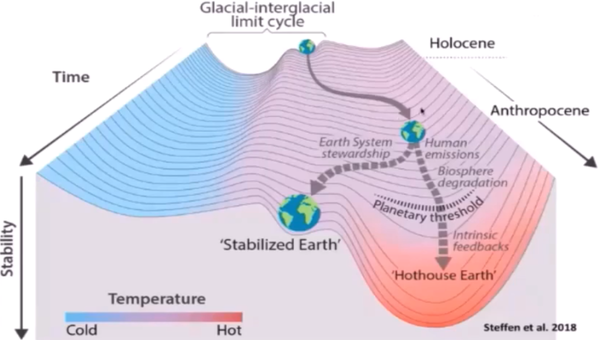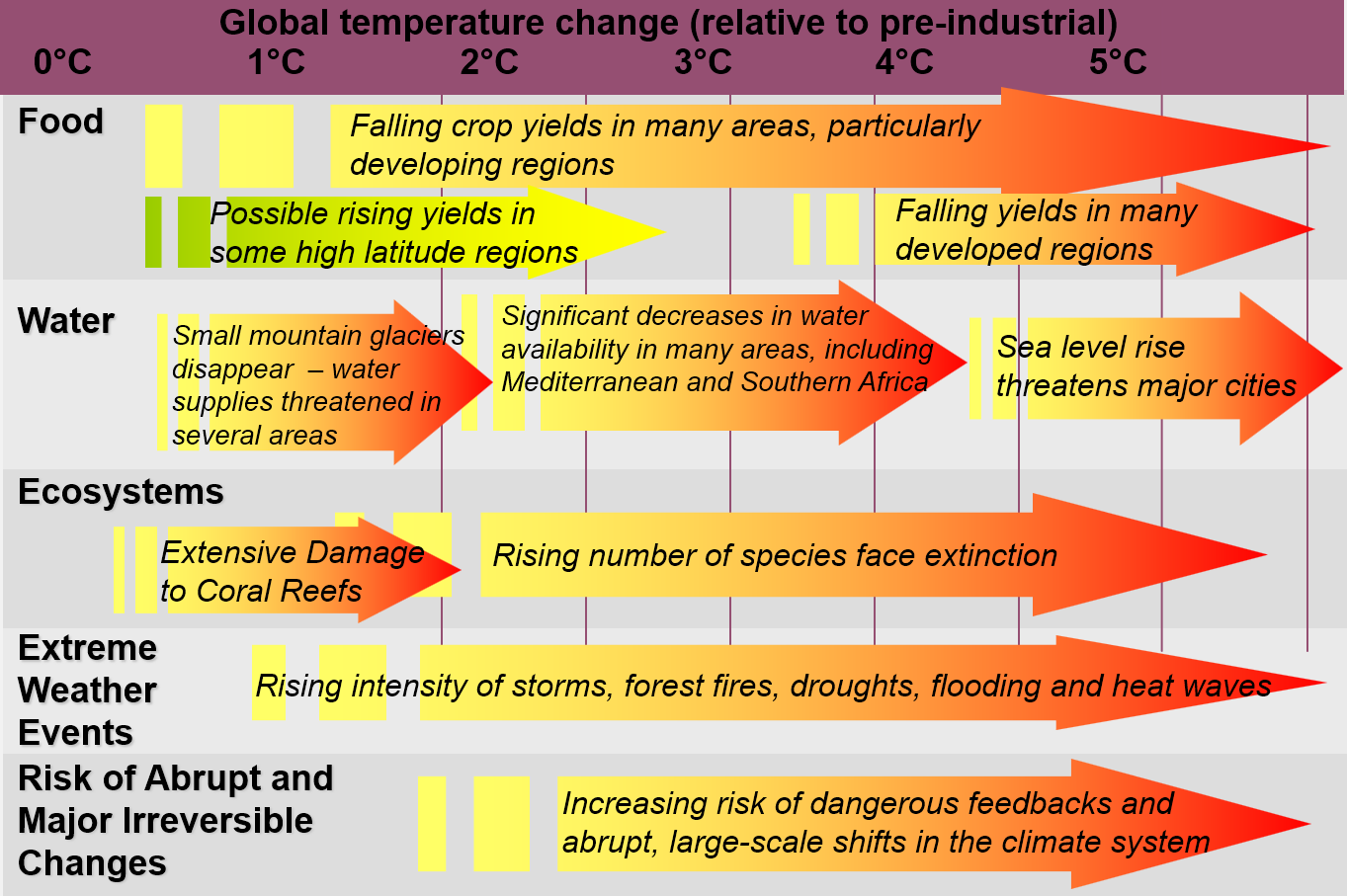Hothouse Earth
Revised 2 December 2023
In their study of tipping elements at risk, Will Steffen and colleagues (2018) conclude: “Our analysis suggests that the Earth System may be approaching a planetary threshold that could lock in a continuing rapid pathway toward much hotter conditions - Hothouse Earth”.

Figure 1: Hot House Earth (Steffen et al. 2018)
In 2021 the International Panel on Climate Change (IPCC) reported that global temperatures are likely to rise by more than 1.5 degree Celsius above pre-industrial levels over the next two decades. This would cause widespread devastation and more extreme weather. Only rapid and drastic reductions in greenhouse gases in this decade can prevent climate breakdown. Every fraction of a degree of further heating is likely to compound the accelerating effects of climate change.

Figure 2: Impact of Climate Change
Climate change scientists have estimated the impact of climate change on food, water, ecosystems, extreme weather events, and the risk of abrupt and irreversible changes. Negative changes are coloured with an increasing intensity of red for each increase in global temperatures above pre-industrial levels. Neutral changes are coloured yellow, and positive changes are coloured green.
Reports by the IPCC are couched in terms of risk and probability because any field of science does not and cannot provide absolute certainty. All knowledge based on science is provisional. What distinguishes genuine science from pseudoscience is its willingness to allow evidence to confirm or challenge its theories.
A strong pattern of climate science has developed over the last number of decades. With each increase in the understanding of our global climate systems, the more dire are the conclusions of climate scientists as to where our global climate system is currently heading due to insufficient action to reduce greenhouse gas emissions.